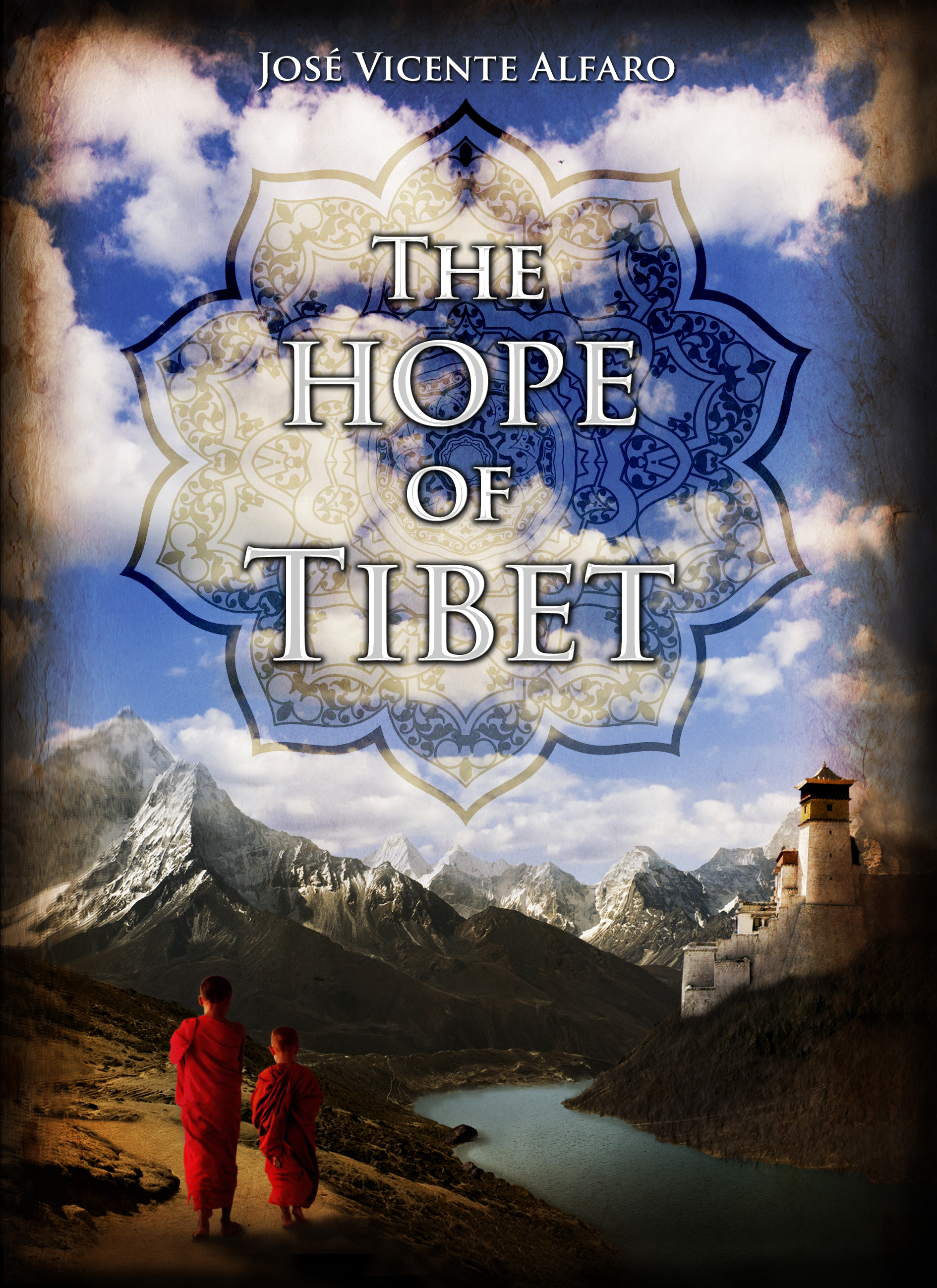
The Karmapa’s life was waning. His time had come and he, more than anyone else, was perfectly aware of it. The light of a bunch of candles penetrated the half-darkness of the room, showing glimpses of a beautiful fresco on the wall. It was dedicated to Avalokiteshvara, the most popular Buddhist deity among the Tibetans. Incense, burning as a symbol of purification, gave off an intense aroma which permeated every corner of the wide hall. The Karmapa was lying on his cotton bed, almost in his death throes, with a mala in his hands and a mantra in his mouth. He had the mala—the Tibetan rosary—wrapped around his wrist, and as he passed the beads he recited the tireless mantra of his own creation, the famous Om mani padme hum, barely moving his lips.
The old Buddhist leader awaited the moment of his death with a serene expression. The sunken eyes and faded cheeks were the only signs of the exhaustion of his worldly body. The Karmapa had served his people well. He had spent the first part of his life within the walls of the monastery, being trained in the ritual practices and religious services, learning the holy texts and meditating unceasingly. But the second part he had devoted to preaching the Buddha’s teachings throughout Tibet as well as abroad, both to noble people and rulers and to the poor and disinherited of the land. The death of the old lama would not simply be one more death. The figure of the Karmapa as head of the Kagyu School, one of the most important in Tibetan Buddhism, was venerated by hundreds of thousands of followers due to his indisputable spiritual leadership.
Together with the Karmapa, accompanying him in his final moments, were two other lamas, both with shaven heads and the traditional saffron Buddhist tunic.
One of them, Tsultrim Trungpa, was looking out at the horizon through the window, below which lay the Tsurphu Monastery. It was set in the middle of a narrow valley at nearly fifteen thousand feet, near the town of Gurum and forty miles or so from Lhasa. Surrounded by high snow-capped peaks, it looked almost otherworldly. Tsurphu Gompa was the seat of the Karmapa. This true monastic city was a complex made up of temples, schools and residences, inhabited by almost a thousand Tibetan monks. Tsultrim stared out as far as he could. That morning the gompa was hidden by a thick white fog, a sure indication of the imminent death of the spiritual leader of the Kagyu lineage.
The hope of Tibet Description:
«Tibet in the 13th century. The so-called “Land of Snow,” beacon of eastern Buddhism, is under the authority of the Mongol Empire, whose domains extend throughout most of the known world.
In this context, the death of the leader of the main Buddhist school urges his followers to begin the search for his reincarnation: a boy who as yet knows nothing of the wisdom within him and the role destiny has in store for his people’s future.
Meanwhile, a humble peasant family, threatened by the assault of the Mongol army, is forced to leave their home village and set out on a journey with consequences none of them can foresee.
A vibrant and moving novel which takes the reader into an environment of legend where the faith of the people and the bleakness of the landscape blend to form a living unity»


